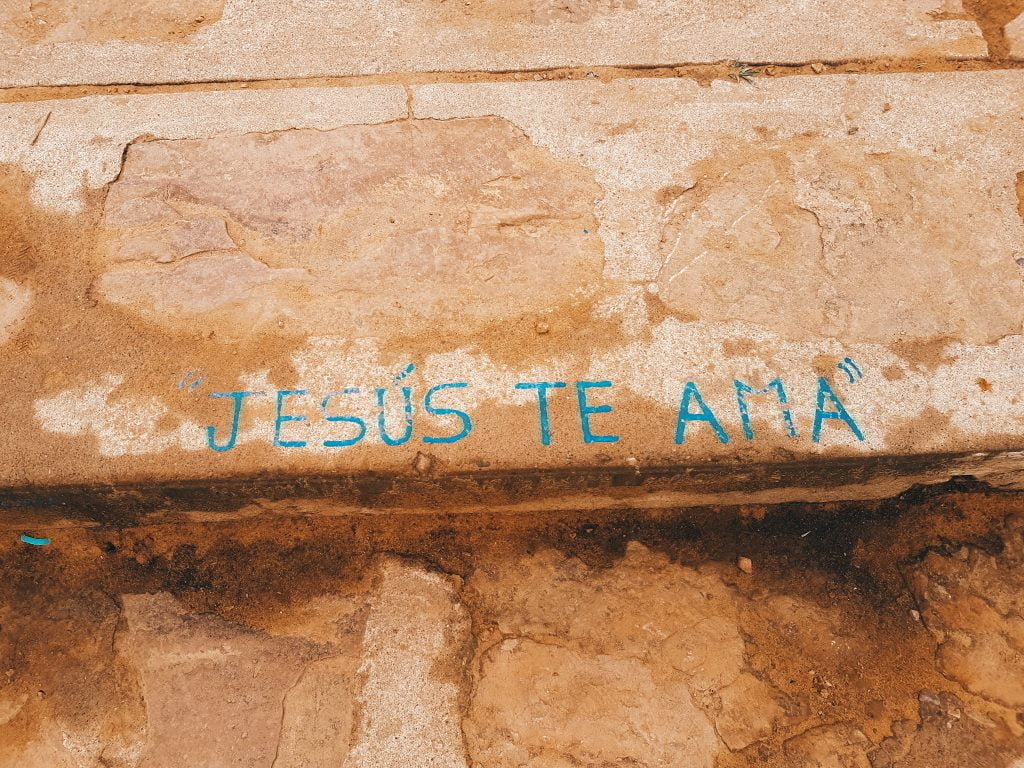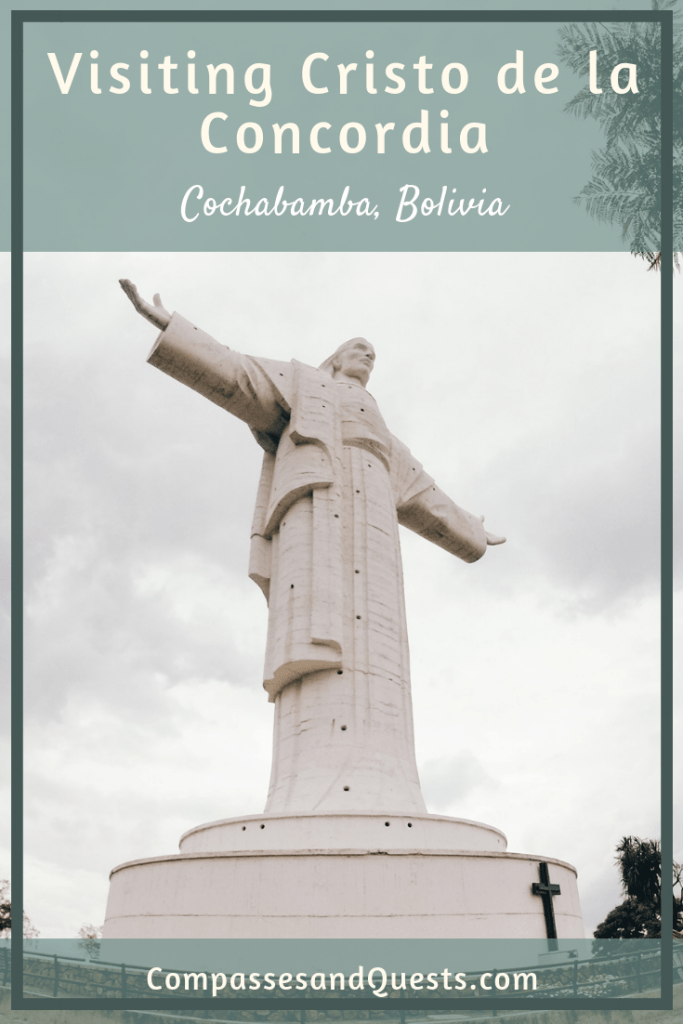In many South American cities, you may see a white Cristo, or Christ, statue perched high up on a hill. Cristo de la Concordia is the second largest statue of Christ in the world and can be found looking over the Bolivian city of Cochabamba. It was the once the largest until a bigger figure was built in Poland. This massive statue was completed in 1994 and was modeled after the very famous Christ the Redeemer of Rio de Janeiro, Brazil. When staying in Cochabamba, we were really glad that we had the chance to see this iconic statue and definitely recommend that you visit for some great city views too.

Getting to Cristo de la Concordia
Getting to Cristo de la Concordia is pretty easy, and there are multiple ways to do so. The most common way people visit the statue is by the teleférico, or gondola. The teleférico usually starts running at 10 a.m. and costs 15 Bolivianos for a round trip ticket. On Sunday, it begins running at 9 a.m. It is not open on Mondays, which is when we went, so we didn’t get to ride in the cable cars. We heard that there is usually a line for the gondola, particularly on Sundays.
Note that the hours that appear on Google differ and state that the cable car is open daily. From our experience and the experience of various others, these hours don’t seem to be correct and hours often vary. It is frequently closed for repairs.

If you’d rather not wait in line or if the teleférico isn’t running, you can take a taxi. There are plenty of taxis waiting around the park at the base to take you up. They should cost about 20 Bolivianos one way. The drivers are willing to wait for you at the top, but may charge a small extra fee and limit your visiting time. If you want a ride back down, there should be enough taxis cycling frequently during the day.
The last way to reach Cristo de la Concordia is by walking the path consisting of more than 1,200 stairs up the hill. This path runs under the teleférico and will take you all the way to the base of the statue. We were warned of the risk of being mugged along this trail, but we didn’t feel unsafe at all. If you are planning on going for sunset, we advise not walking the trail in the dark if there aren’t many people around and maybe opting for a taxi instead.

For all of these options, you can also take one up and another down if desired.
Visiting Cristo de la Concordia
Once we arrived at Cristo de la Concordia, there wasn’t anything particularly eventful going on. It was quiet when we went, and there were a few groups sitting on benches and walking around the site. However, during holidays and some weekends, this place apparently gets quite busy.
We felt really small standing next to this massive statue! You used to be able to pay a few Bolivianos to climb up inside the statue, but this is supposedly not permitted anymore.

Even if you don’t have the opportunity to climb the statue, the view of Cochabamba from the grounds around the Cristo monument is beautiful. We really got an idea of how large the city is while looking over the sprawling expanse it covered.
There were a couple vendors around selling bracelets, drinks, and empanadas for visitors. We assume that there are more vendors on busier days when the teleférico is open and on weekends. There is also a restaurant near the top that offers the chance to dine with great views over the city.

After spending some time admiring the views, we climbed back down the hillside. The stairs take 20-30 minutes one way. You can spend as long as you’d like near the Cristo de la Concordia, but the whole viewpoint doesn’t take long to walk around.
This makes for a great half-day activity, and we were really glad that we made time for this during our short stay before heading to Santa Cruz de la Sierra.
Have you seen one of these large statues somewhere in the world?
Like this Post? Pin it!




